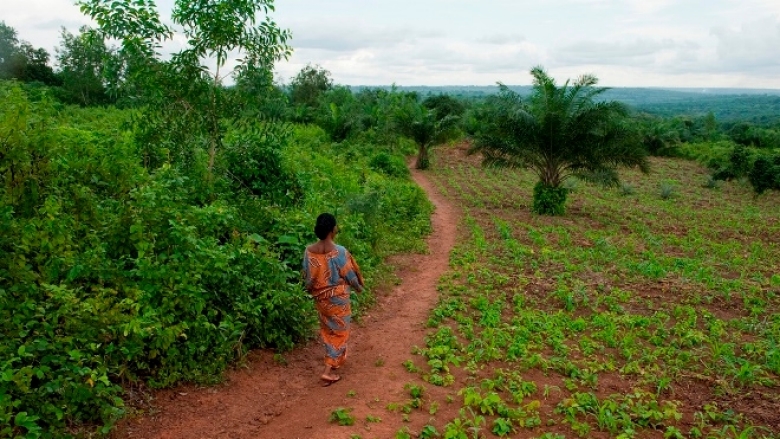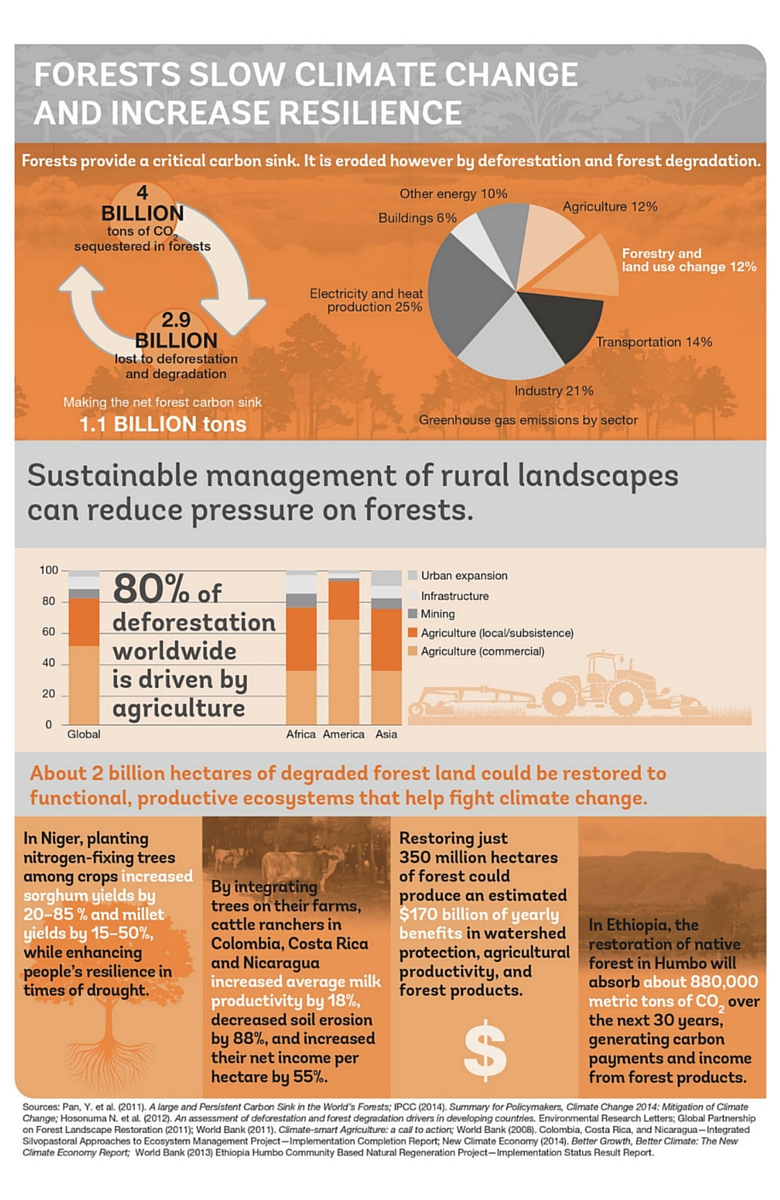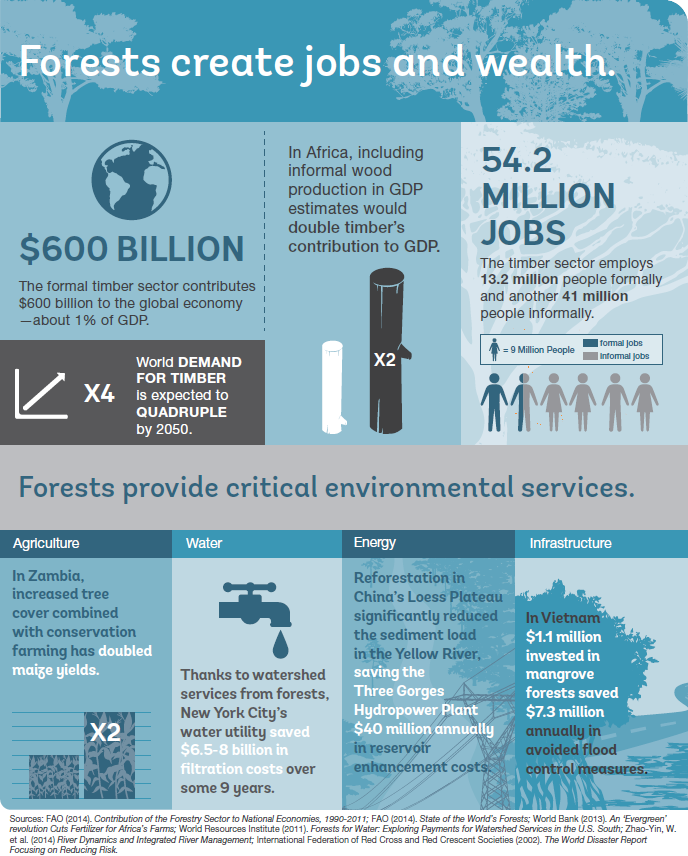Equally important is the link between forests and people. An estimated 1.3 billion individuals – about one-fifth of the global population – derive direct and indirect benefits from forests in the form of employment, forest products, and contributions to livelihoods and incomes. Some 300–350 million people, about half of whom are indigenous, who live within or close to dense forests depend almost entirely on forests for subsistence. Hundreds of millions more, including people in cities, depend on forest resources for food, construction materials, and energy sources.
Furthermore,. With a growing demand for forest products, this contribution is expected to increase in the coming decades. , produces more than 5,000 types of wood-based products, and generates a gross value added of just over $600 billion—nearly 1 percent of global GDP—each year.
Three examples of recent or ongoing projects that benefit from World Bank support help demonstrate why finance for the sustainable use of forest resources and efforts to support low carbon development are more important than ever to the future of forests, and to build resilience to climate change and improve livelihoods.
Ethiopia
The Oromia Forested Landscape Program is helping to improve land use and reduce deforestation trends in the regional state with a population of 30 million. Forests nationally, and in Oromia in particular, continue to shrink primarily from demand for cropland and firewood, and between 2000 and 2013, forest loss in the state totaled nearly 400,000 ha. The initiative in Oromia potentially totals US$68 million from the BioCarbon Fund’s Initiative for Sustainable Forest Landscapes (supported by Norway, the United States and the United Kingdom).
An emission reductions purchase agreement that could be up to US$50m covering 28 million hectares—a jurisdiction the size of Italy—will also combined with a US$18m upfront grant to strengthen the enabling environment and investments on the ground. Implementation activities like local land use planning, whereby communities would identify and agree to conserve forest areas (particularly in the frontier between cropland and forests) help lay the groundwork so that as the program progresses, sectors, stakeholders and financing can be mobilized for sustainable land use.
Looking ahead, the program will be the regional state’s overarching umbrella and coordination platform for multi-partner work on all forested landscapes across Oromia. The long-term program will help transform how these landscapes are managed to reduce poverty, build resilient livelihoods, and mitigate climate change.
Vietnam
In Vietnam - where some 25 million people depend on forests for subsistence – the World Bank Forest Sector Development Project (FSDP) is taking a unique approach to sustainability and biodiversity conservation by focusing on the efficient use of degraded land, as well as improved land tenure. Over 43,000 households received low-interest micro loans and technical support to set up their own plantation forests.
Nearly 75% of these planted lands met international standards for sustainability, while households that completed the process for International Forestry Stewardship Certification saw 20-30 percent price premiums on their timber (compared to non-certified). This extra profit has helped families to repay their loans and invest in education and other needs. The FSDP also reinforced regulations and capacity for protecting biodiversity in Special Use Forests, including several areas that are internationally recognized for their ecological importance.
Through a landscape-level emission reduction program developed in the North Central Coast Region, the Government of Vietnam also hopes to promote the approach developed in the FSDP project. That is, payments from the Forest Carbon Partnership Facility’s Carbon Fund for carbon sequestered by forest development activities would provide an incentive and a source of co-financing to scale-up such investments going forward.
Kazakhstan
Another World Bank project aimed to address forest management challenges is in Kazakhstan, where forests are not only an important source of permanent and seasonal employment in many communities, but are also highly valued for fuel wood, livestock grazing areas, beekeeping, collecting berries and mushrooms, and recreation. However, community access to forests has been limited in certain areas in an effort to address illegal logging and forest fires – the latter pose a particular challenge in Kazakhstan’s dry climate. At the same time, the country needs greater national and local capacity in order to respond to fires and other risks.
With $30m in World Bank funding and $5m from the Global Environment Facility (GEF), the Forest Protection and Reforestation Project is focused on participatory administrative methods to bring almost a million hectares under improved environmental management, including 46,000 hectares of re-planted Irtysh Pine Forest.
Greater knowledge of modern growing techniques has significantly reduced how much the government spends on planting costs, and new trucks and state-of-the-art fire detection information systems have drastically improved the reach and response time for addressing forest fires. The project also has valuable implications for climate change: the value of mitigated GHG emissions comes to US$306 million over 20 years.



